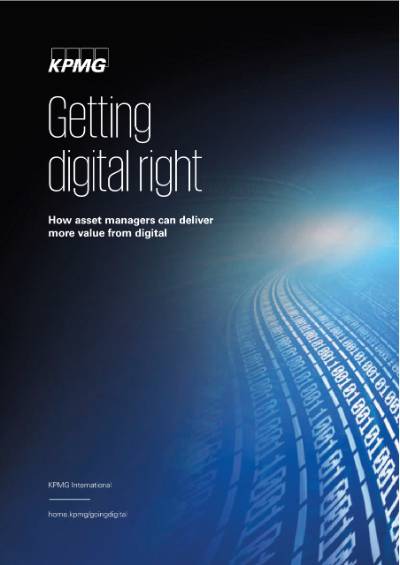Digital technologies are changing the world in which asset managers compete.
Asset managers’ views on the benefits of ‘going digital’ are wide-ranging, but broadly they are seen under the following 3 target outcomes:
- Improving client engagement
- Improving efficiency and controls
- Improving business management
Where are the digital dollars being spent? How are digital programs being resourced? It’s not just about how programs are being resourced but how they are being led.
Getting value from digital dollars
What drives success and what are the critical barriers to achieving that success?
While many respondents are seeing value from their digital investments, it is telling that a significant percentage are reporting ‘debatable’ or even ‘low value’. This is worrying given the importance of the programs and the investment being made.

We identified a number of success factors and barriers
Perhaps not surprisingly, three-quarters of respondents say their firm has a strategy in place for guiding its investments in digitization. Our research shows, however, that the quality and clarity of a firm’s digital ‘strategy’ and, more importantly, how well it is integrated into its core business strategy is critical to a firm’s success in going digital; the two can no longer be treated separately.

On the flip side, vague visions for success, lack of in-house capability and poor change management were seen as factors that limited the success of respondents’ digital strategies. Ill-defined benefits and target outcomes were most often called out as the single biggest impediment to progress. Larger asset managers found this lack of well-defined outcomes as their biggest barrier to digital success, whereas smaller firms struggle more with finding the right internal talent and coping with shifting priorities. For firms of all sizes, another significant constraint is the impact of regulatory change on digitization efforts, which many respondents said had usurped their firms’ investment priorities.
Takeaways - Roadmap of the digital journey
Review and reflect — We recognize that many asset managers are already on the digital journey. If you are one of those that feels it is not delivering the expected benefits, perhaps it's time to press pause, revisit your strategy, weigh your options and pivot to a new path.

Get agile! — Creating new digital capabilities — whether that's in portfolio management or fund accounting oversight — is not done via the multiyear, multimillion dollar projects of yesteryear. Digital apps are created in weeks, deployed instantly and refreshed/updated in real-time via the Cloud. This can only happen when you get agile. You need to nurture an environment that rewards quick learning and learns from fast fail experiments; pivoting to that mind-set in a regulated industry is not easy but it can be done.
How we can help
- With asset managers poised to devote significant funds to their digitization efforts in the next 12 months, it’s time to make bold decisions about the right way forward.
- KPMG ‘gets’ digital; it’s how our people think about the world and how we conceive our clients’ futures.
- We can help your business go digital. Whether it’s a strategic reset, designing a digital client experience or creating the data and analytics capability to drive sophisticated client segmentation and targeting strategies, we’ll partner with you to achieve your goals.
- With a multi-disciplinary team drawn from our member firms across the globe, our professionals have worked in every aspect of the asset management sector, including traditional investment management, retail mutual funds, institutional investment, private equity, hedge funds and other alternative investments.
Recent case studies
Back-office automation
KPMG supported an asset manager with the design, pilot and implementation of an RPA solution. Using the Blue Prism automation software, a range of high-volume trading, settlement and reconciliation processes were automated. Machine-learning capabilities were also designed into the automation components to drive ongoing efficiencies. Outcomes from the program included faster processing, lowered costs, higher levels of accuracy and much improved capacity planning to meet peak workloads.
Sales enablement
KPMG assisted a global asset management firm in developing a guided selling platform for their salesforce.
An advanced analytical model was developed and deployed to identify potential client targets and evaluate sale propensities through the selling cycle using historical transactions data, digital interaction analysis and social media inputs.
The initial pilot rollout saw an increase in sales of 25 percent across the selected salesforce.
Advisor engagement
We helped a global asset management firm build an NLP engine to capture and harvest unstructured data to identify and recommend relevant articles that would be of interest and benefit to financial advisors.
After evaluating current process and sources of information used and ideally required, we designed and built an NLP tool and assisted the client in deploying the solution. Adoption was over 63 percent across the advisor network with 70 percent reporting improved quality and accuracy in classifying and recommending articles.
Get in touch
Connect with us
- Find office locations kpmg.findOfficeLocations
- kpmg.emailUs
- Social media @ KPMG kpmg.socialMedia






